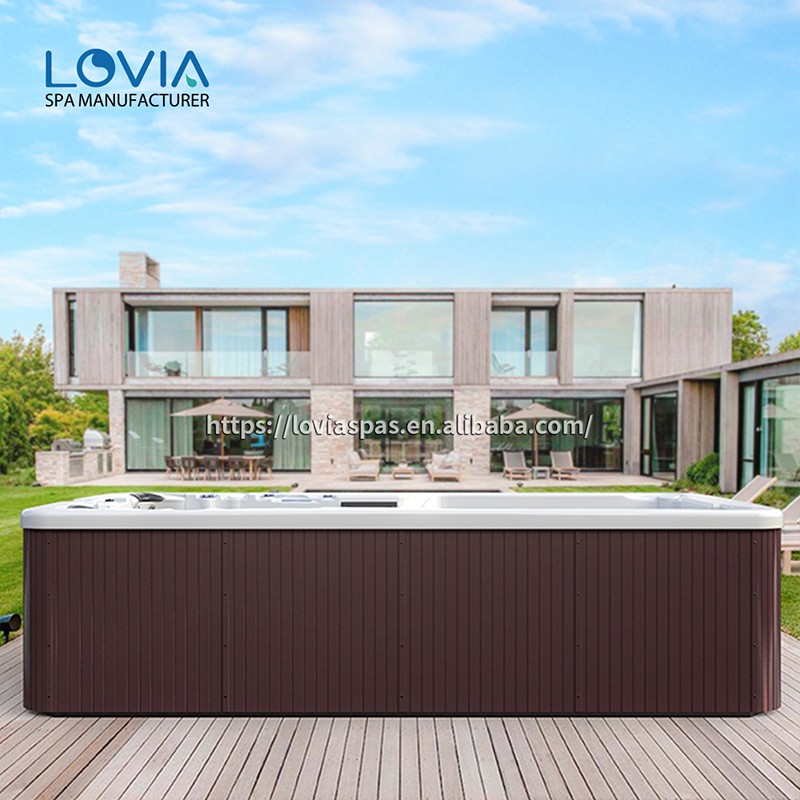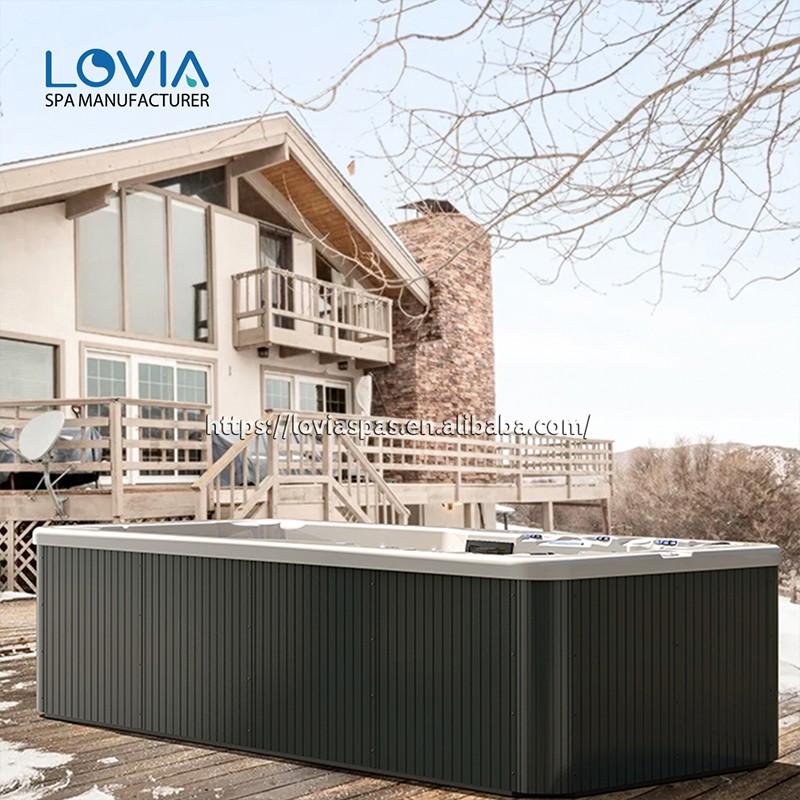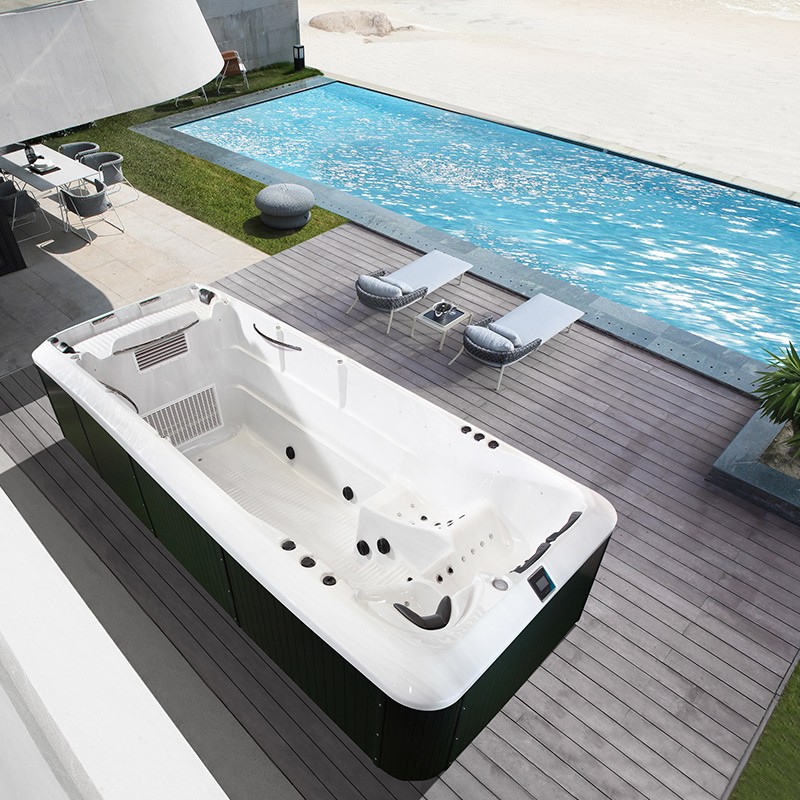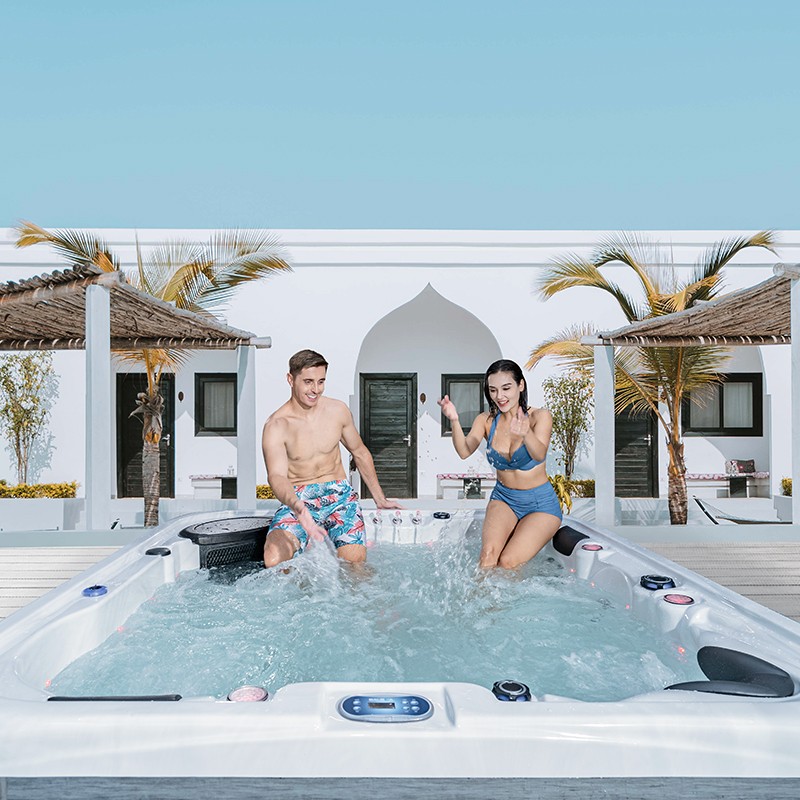
Does installing a swim spa tub require a permit?
2025-07-21 15:30"Swim spa tubs" combine swimming pool sports with massage and leisure functions, and are becoming increasingly popular in modern homes and wellness facilities. Many owners consider installing them in their own yards, terraces or indoor spaces. But a practical question that cannot be avoided is: Do you need to apply for a permit to install a swim spa tub? The relevant requirements not only involve construction regulations, but also safety compliance, electrical equipment, waterproof structures and other dimensions.
This article will focus on this issue and analyze in depth what licensing and compliance processes should be understood and implemented before installing a swim spa tub, so as to avoid safety risks, legal disputes or inability to use it normally due to lack of a permit.

Definition, structure and installation characteristics of swim spa tubs
1. What is a swim spa tub?
A "swim spa tub" is a device that combines the functions of a traditional swimming pool with a hot water massage system. It usually has the following features:
· Medium water capacity (about 5,000-12,000 liters): smaller than a standard swimming pool, but larger than an ordinary hot tub;
· Controllable water temperature: adjustable to 30-40°C;
· Massage nozzles and bubble system: provide multiple experiences such as underwater thrust, massage, bubble impact, water flow resistance, etc.;
· Closed circulation system: continuous operation through pumps, filters, and heaters;
· Can be installed both indoors and outdoors: suitable for a variety of environments such as living rooms, terraces, and backyards.
2. Main components and installation requirements
Installing a "swim spa tub" usually involves the following systems:
·Main structure installation: including lining assembly, nozzle and shell fixing;
·Pump and filtration system: connecting water suction pump, circulation pump, filtration device;
·Heating device connection: electric heater, heat pump, wall-mounted boiler or external hot water system;
·Electrical line layout: trip protection, grounding system, leakage prevention measures;
·Water supply and drainage system: water supply, drainage, pressure relief valve, overflow well and other structures;
·Support structure: ground bearing, structural foundation, shock and vibration reduction;
·Anti-slip and heat insulation treatment: edge pedals, steps, pedestals, fences, etc.
Due to these characteristics, installing a swim spa tub goes far beyond the scope of a simple massage bathtub or hot tub, and is often regarded as a "small attached swimming pool" or "outdoor entertainment facility". Therefore, whether a license is required depends on the specific installation environment and the definition and management of "water facilities" in local regulations.

Does the installation of a swim spa tub require a license?
Whether a license is required to install a swim spa tub depends on the following legal and regulatory dimensions:
1. Construction Project and Small Water Body Regulations
In most areas, any large fixed water body (whether it is a swimming pool, hot tub or swim spa tub) will be considered as a "building ancillary facility" or "small water body project" if its volume, depth, structure, etc. meet certain standards and need to be included in the planning and construction management system. For example:
· The water depth exceeds 0.5 meters;
· The water area or water capacity reaches the threshold specified by the local regulations;
· Fixed embedded structure (drilling well, concrete pool);
· The facility is firmly connected to the ground and is not a mobile device.
Such facilities often need to be reported to the construction administrative department and obtain a "construction project planning license" or "construction project construction license".
The specific standards vary from place to place. Some cities even stipulate that any installation of swimming equipment with circulating water supply and fixed structure requires a license. Therefore, as long as your swim spa tub has the characteristics of "fixed installation, circulating water supply, and a certain depth of water", it is likely to be managed as an ancillary swimming pool and require relevant licenses.
2. Building structure and floor load-bearing standards
If a swim spa tub is installed indoors, on the top floor or on a terrace, it will also involve floor load-bearing specifications, structural safety inspections and renovation permits. Common requirements include:
· Floor load-bearing capacity ≥ 500–600 kg/m²;
· Node support and structural reinforcement design, sometimes subject to review by a structural engineer;
· Installation may also involve structural construction such as demolition and modification of floors or addition of supporting beams and columns, which may be considered as part of a construction project.
In addition to construction permits, these actions may cause safety hazards to the main building. If the permit is not obtained, the property rights agency or property may require demolition or compensation.
3. Electrical installation and waterproofing standards
Swim spa tubs integrate electrical components, water pumps, heaters, lighting, etc., and their electrical installation involves the following regulations:
· "Low Voltage Electrical Installation Design Code";
· Leakage protection (differential protector);
· Waterproof and moisture-proof grade (IPX protection grade);
· Wires and cables must meet the waterproof, anti-aging, and anti-bite protection grade standards;
· Electrical modifications must be carried out by qualified electricians and obtain acceptance certificates.
Similarly, if the local power department is not registered or a license is obtained, once a failure or accident occurs, liability and compensation will become a problem.

Comparison of license requirements in different scenarios
To help you understand the license requirements for swim spa tubs in various installation scenarios, the following analyzes the scenarios of courtyards, terraces, and indoors:
Swim spa tub installation scenarios | Building permit required? | Is electrical permit required? | Waterproof and structural approval | Notes |
| Backyard ground type | Required in most areas | Required | Minimum anti-seepage design | Similar to a small swimming pool, planning + construction |
| Roof terrace type | Required | Required | Mandatory structural reinforcement requirements | Involves floor load-bearing verification |
| Indoor fixed type | Usually required | Required | Waterproof and moisture-proof engineering | Considered as indoor water construction |
| Mobile soft type | Depends on the specific situation | May not required | None | If there is no fixed structure and the capacity is small, the permit may be exempted |
| Prefabricated integrated tub | More required | Required | Cylinder body leakage treatment | Some structural permits may be exempted depending on the specific situation |
Among them, mobile inflatable, soft-shell or small-capacity swim spa tubs can be exempted from some licenses if they are only used temporarily, but they may still involve electrical and safety regulations. Prefabricated and fixed sets are usually large in size and fixed in structure, so the minimum licensing requirements also include planning and electrical review.
Types and procedures for obtaining a license to install a swim spa tub
1. Construction project planning permit
·Applicant: individual or construction unit;
·Application materials:
·Construction drawings or simple drawings (plan, pool section diagram);
·Construction land approval documents (if construction is required);
·Structural safety assessment;
·Process time: generally 15-30 days for approval;
·Result: Planning permit document, indicating the approved contents such as "net water area", "water depth" and "building coordinates".
2. Construction project construction permit
·Application conditions: complete planning acceptance and prepare for construction;
·Application materials:
·Construction organization design;
·Construction unit and project supervision documents;
·Safe and civilized construction plan;
·Approval content: whether it is also included in the overall construction project, it needs to be jointly approved by the housing and construction department and the Construction Bureau.
3. Structural and floor reinforcement permit (indoor use)
·Design basis: Structural design institute or qualified third-party assessment report;
·Application materials:
·Structural calculation book;
·Reinforcement plan;
·Construction unit qualification;
·Approval agency: Construction, Structural Engineering Management Bureau or Housing Management Department.
4. Electrical installation permit and acceptance
·Applicant: Qualified electrician or electrical installation company;
·Application materials:
·Electrical drawings (circuit breaker model, cable specifications, GFCI algorithm);
·Electricity safety assessment;
·Acceptance process: After completion, the power supply company or the supervision agency will conduct a third-party acceptance and issue an "electrical certificate".
5. Fire and water safety filing
If your swim spa tub is for public use (such as a hotel or club), it may also involve public fire filing and water quality test reports, especially when the bathtub and the ancillary building are used together as a venue. These approvals must be carried out simultaneously before construction.

Potential risks of installing a swim spa tub without applying for a permit
The consequences of bypassing permits and hidden construction for installing a swim spa tub may include:
1. Risk of house seizure and demolition
The construction supervision department has the right to determine that your facility is "illegally constructed", issue a notice to order demolition, and even impose a high fine.
2. Clear responsibility after an accident
In the event of drowning, leakage, collapse, etc., the insurance company may refuse to pay compensation, or the local department may determine that you did not have the construction qualifications and caused the accident, and all responsibilities belong to the property owner.
3. Secondary transaction disputes
When the house is sold in the future, the missing information such as property registration, land use nature, and construction permit may be determined as "subsidiary illegal construction", affecting the ownership and valuation of the sale.
What kind of customization can you provide for spa products?
Our customization services cover design, branding, components, and packaging. You can select jet layout, shell color, cabinet material, logo placement, and control systems based on your target market. As a professional OEM/ODM spa manufacturer, we’ve helped numerous brands grow by offering fully customized hot tub and swim spa solutions.
